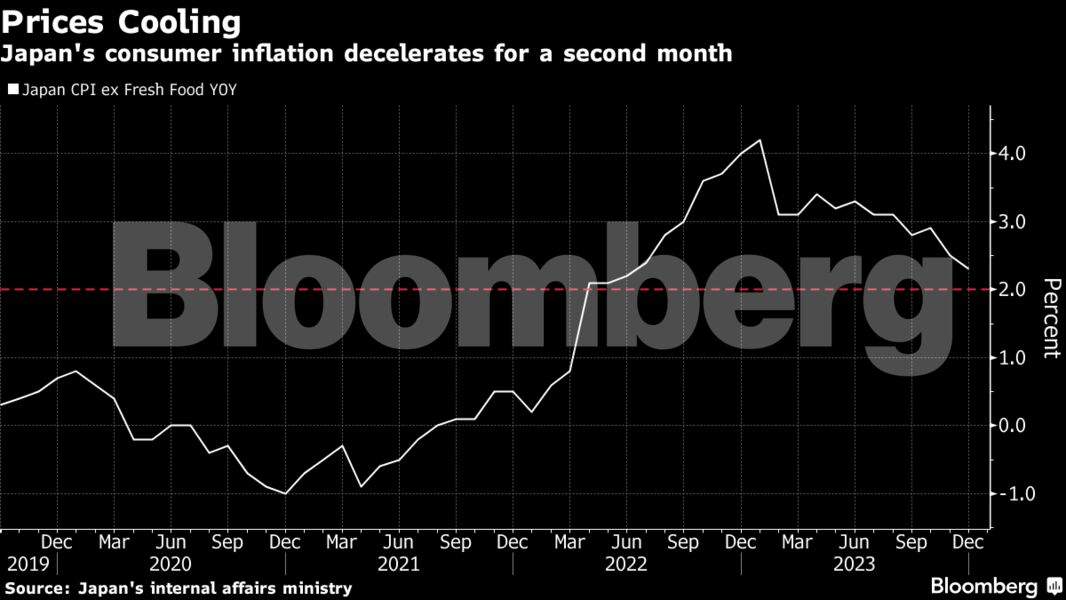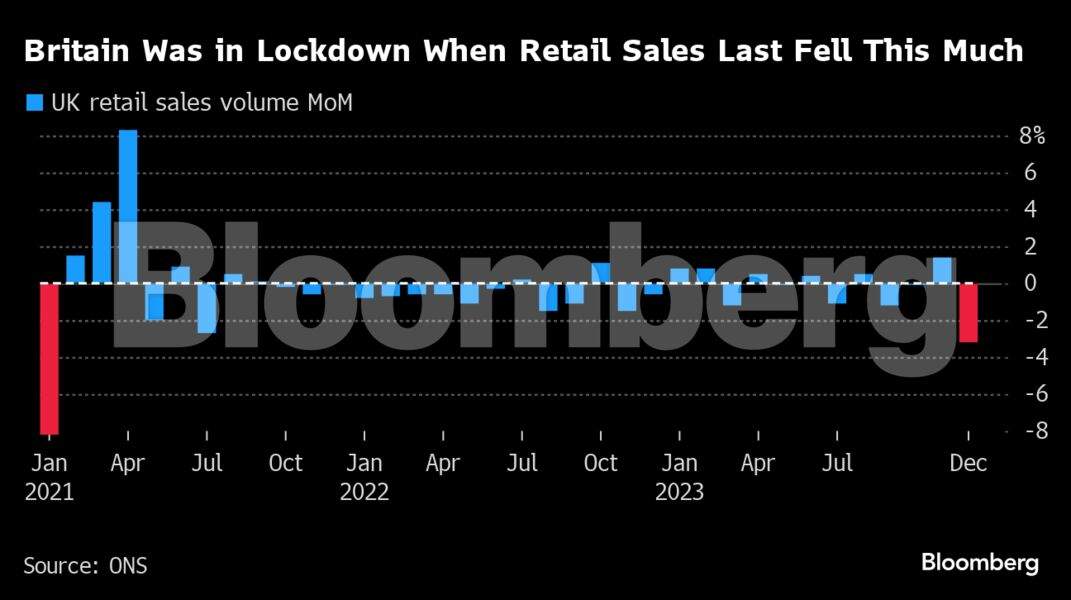Inflation in Japan slowed for a second month, giving central bankers reason to wait before ending their negative rate policy. While the data support the view the Bank of Japan officials won’t rush into the first rate hike since 2007 when they meet next week, services prices remained elevated and suggest that an eventual normalizing of policy remains on the table.
Inflation expectations declined in Europe, while retail sales and consumer sentiment in the US increased. Here are some of the charts that appeared on Bloomberg this week on the latest developments in the global economy:
World
Bank Indonesia left its benchmark interest rate unchanged, and signaled caution in easing monetary policy as it awaits more convincing signs of rupiah stability and manageable inflation. Angola also held while Kazakhstan and Paraguay continued their rate-cutting campaigns.
Asia

Japan’s latest inflation report gives the BOJ another reason to wait beyond next week’s meeting before ending the negative rate policy, while also adding to the case for a hike in coming months. For a second month, services prices rose at the fastest pace in three decades when excluding periods distorted by sales tax hikes.

China’s deflation was driven by falling prices in its manufacturing sector last year, adding to the risk of trade tensions with the US and Europe amid a major ramp-up in Chinese industrial capacity.

Japan welcomed 25 million tourists in 2023, the largest number since 2019, as a weak yen helped attract post-pandemic visitors in a boost to the nation’s fragile economy. The return of large numbers of visitors to Japan is a positive development for an economy that shrank at the sharpest pace since the height of the pandemic in the summer.

China’s population declined at a faster pace in 2023 as births fell to a record low, accelerating a demographic shift that poses long-term challenges to a government already contending with deflation pressures and a property crisis. The decline in births could pose more challenges to the economy, which hit an official growth target for last year but remains dragged by factors including weak domestic demand and confidence.

Europe
Consumer expectations for euro-zone inflation fell in November to the lowest in more than 1 1/2 years — supporting markets’ view that interest-rate cuts by the European Central Bank could soon be in the offing. Despite an uptick in December, inflation is in retreat across Europe, with its rapid slowdown prompting investors to speculate on rate reductions as soon as the spring.

UK retail sales fell at the fastest pace since Covid-19 lockdowns three years ago, adding to the risk the economy slid into a shallow recession to end 2023.

US
US retail sales rose in December by the most in three months, capping a solid holiday season that suggests consumer resilience. However, economists cautioned the momentum may fade in 2024 as consumers contend with lingering inflation, elevated borrowing costs and waning savings.

Wage growth is on track to slow to around its pre-pandemic pace over the next few months, according to data from job-search website Indeed, relieving one source of inflationary pressure that’s been a concern for the Federal Reserve.

Consumer sentiment soared in early January to the highest since 2021, far exceeding expectations, as short-term inflation expectations slipped to a three-year low. More than half of households expect their incomes to grow at least as fast as inflation, the highest share since mid-2021.
Emerging Markets

El Nino, the weather phenomenon with a history of disrupting agricultural powerhouses like Brazil, has returned with a vengeance in the South American summer, unleashing torrential rains in parts of the country and leaving others uncommonly dry. Prices of staples like rice and potatoes are soaring as a result, challenging both the central bank’s plans to continue the interest rate cuts the president demanded and his campaign promises to deliver cheaper fare to everyday Brazilians.











